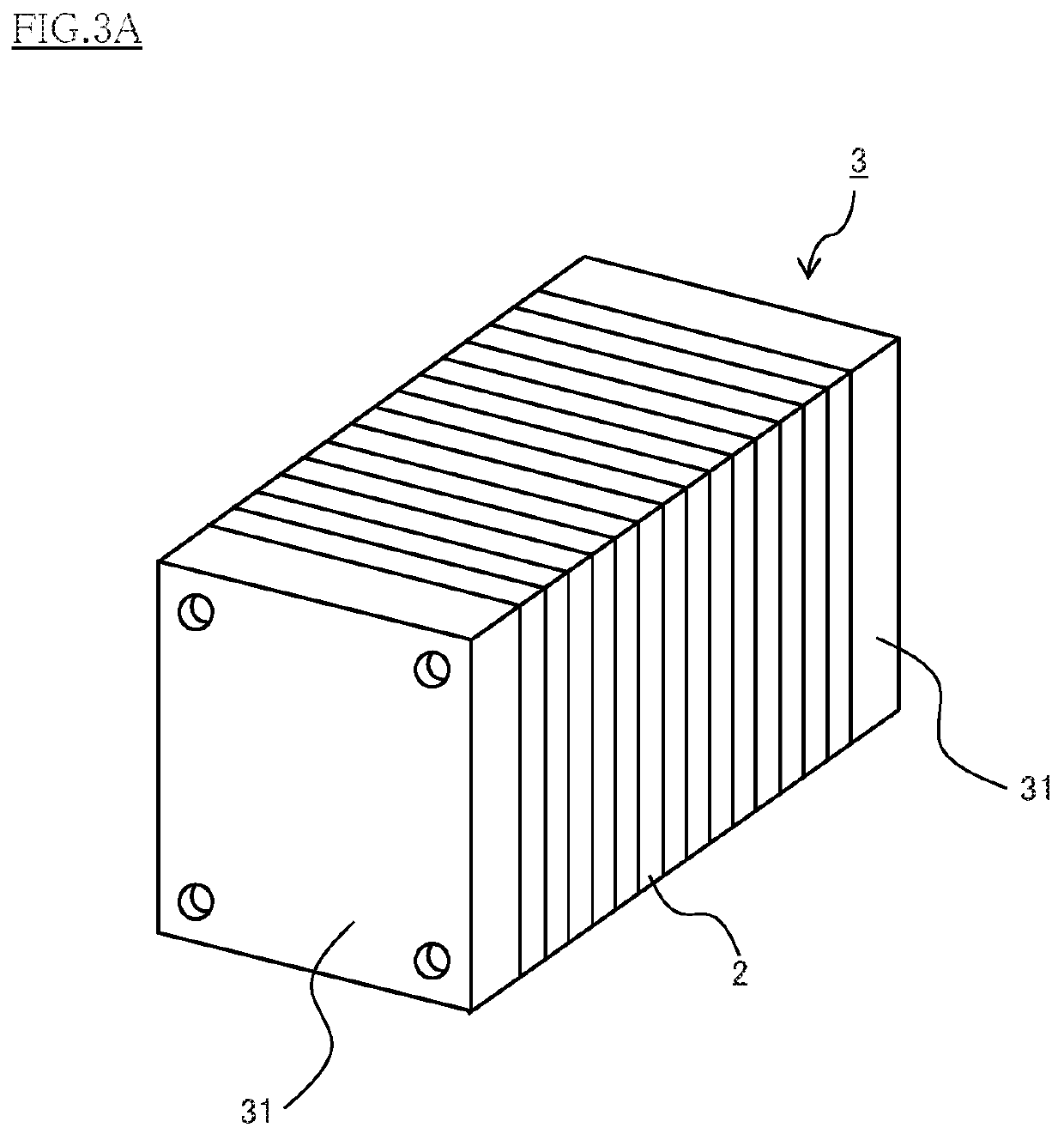Conducting member for fuel cells, fuel cell, fuel cell stack, and method of producing conducting member for fuel cells
a technology of conducting member and fuel cell, which is applied in the direction of cell components, final product manufacturing, sustainable manufacturing/processing, etc., can solve the problems of insufficient gas barrier property and strength, material cost and working cost increase, etc., and achieve excellent corrosion resistance and effective suppression of the elution of a base material
- Summary
- Abstract
- Description
- Claims
- Application Information
AI Technical Summary
Benefits of technology
Problems solved by technology
Method used
Image
Examples
example 1
[0085]First, a stainless steel material (SUS316L) was prepared as a base material 11. Next, the base material 11 prepared was subjected to an electroless plating treatment under the conditions of 38° C. for 4 minutes using a plating bath obtained by mixing a palladium plating bath and a nickel plating bath described below at a proportion of palladium plating bath:nickel plating bath=5.7:1 (volume ratio). Thus, a Ni—Pd—P alloy layer having a thickness of 40 nm was formed as an alloy plating layer 12 on the base material 11. Meanwhile, regarding the palladium salt, reducing agent and complexing agent used in the plating baths, conventionally known compounds were used. Also, the proportion Ni:Pd (molar ratio) in the plating bath obtained by mixing a palladium plating bath and a nickel plating bath was 1.14:1.0.
[0086]Palladium salt: an amount to make the amount of Pd in the palladium plating bath 0.15 wt %
[0087]Reducing agent: 1.8 wt %
[0088]Complexing agent: 0.63 wt %
[0089]Water: 87.2 w...
reference example 1
[0101]A stainless steel material (SUS316L) used in Example 1 described above was prepared, and the above-described evaluation of corrosion resistance and measurement of electrical resistance were performed for the stainless steel material as it is without forming an alloy plating layer 12 and a gold plated layer 13 on the stainless steel material. The evaluation of corrosion resistance was performed for SUS316L masked with a polyimide tape to expose a surface area of 50 mm longitudinal and 60 mm lateral. The measurement of electrical resistance was performed for SUS316L worked into a size of a width of 20 mm, a length of 20 mm, and a thickness of 0.1 mm. Results are shown in FIG. 10 and Tables 1 and 2.
reference example 2
[0108]The stainless steel material (SUS316L) used in Example 1 described above was prepared. The stainless steel material was immersed into a sulfuric acid aqueous solution of 0.049 wt % (pH 2) under the conditions of 90° C. for 24 hours to subject the stainless steel material to an acid treatment, thereby to form a passivation film 111 on the surface of the stainless steel material, followed by washing the stainless steel material with water.
XPS Measurement
[0109]An X-ray photoelectron spectrometer (manufactured by ULVAC-PHI, Inc., product No.: VersaProbe II) was used for the surface of a passivation film 111 formed on the surface of a stainless steel sheet to measure respective peaks of Fe2p and Cr2p. The intensity of each the obtained peaks was obtained from the areas of the peaks. Results are shown in Table 3. In Table 3, the intensity of each peak was obtained so that the total of the intensity of the peak of Fe2p and the intensity of the peak of Cr2p was 100.
AES Measurement
[011...
PUM
| Property | Measurement | Unit |
|---|---|---|
| molar ratio | aaaaa | aaaaa |
| temperature | aaaaa | aaaaa |
| pH | aaaaa | aaaaa |
Abstract
Description
Claims
Application Information
 Login to View More
Login to View More - R&D
- Intellectual Property
- Life Sciences
- Materials
- Tech Scout
- Unparalleled Data Quality
- Higher Quality Content
- 60% Fewer Hallucinations
Browse by: Latest US Patents, China's latest patents, Technical Efficacy Thesaurus, Application Domain, Technology Topic, Popular Technical Reports.
© 2025 PatSnap. All rights reserved.Legal|Privacy policy|Modern Slavery Act Transparency Statement|Sitemap|About US| Contact US: help@patsnap.com



